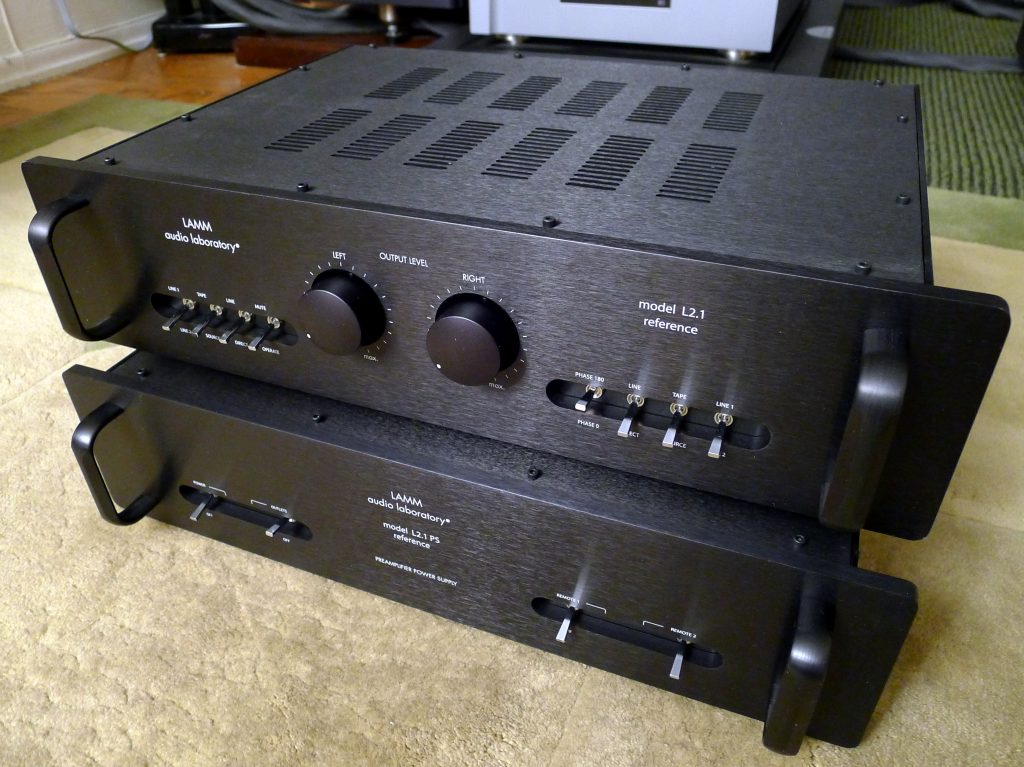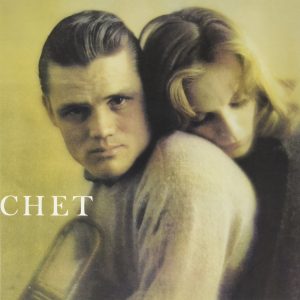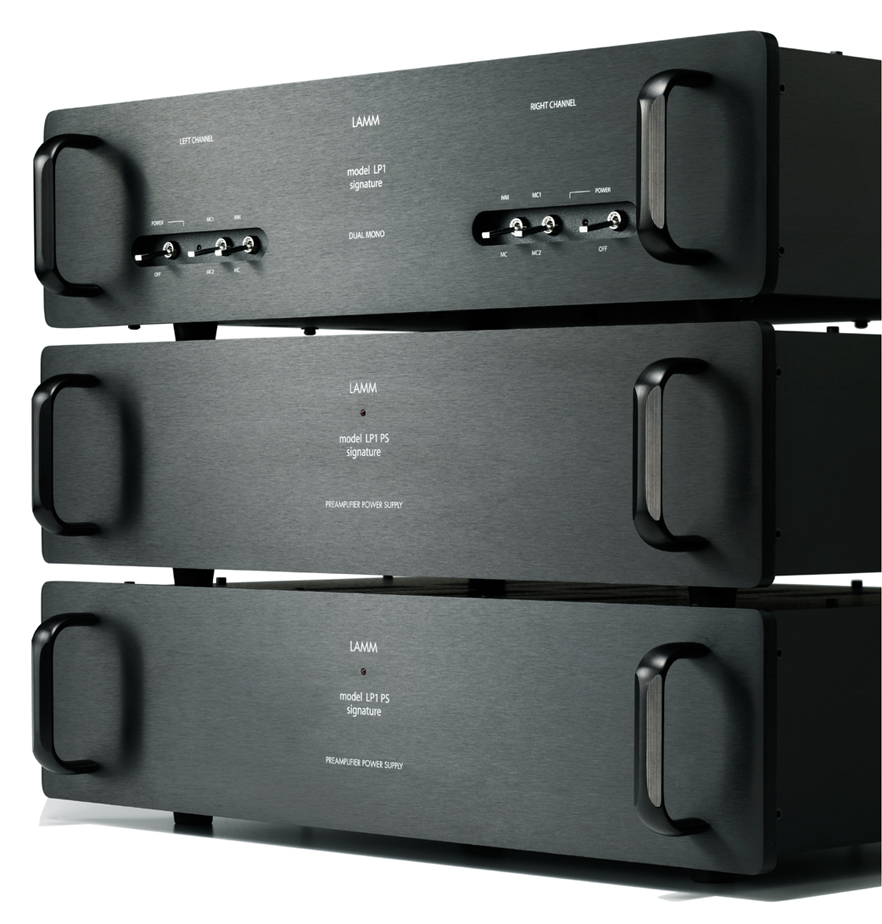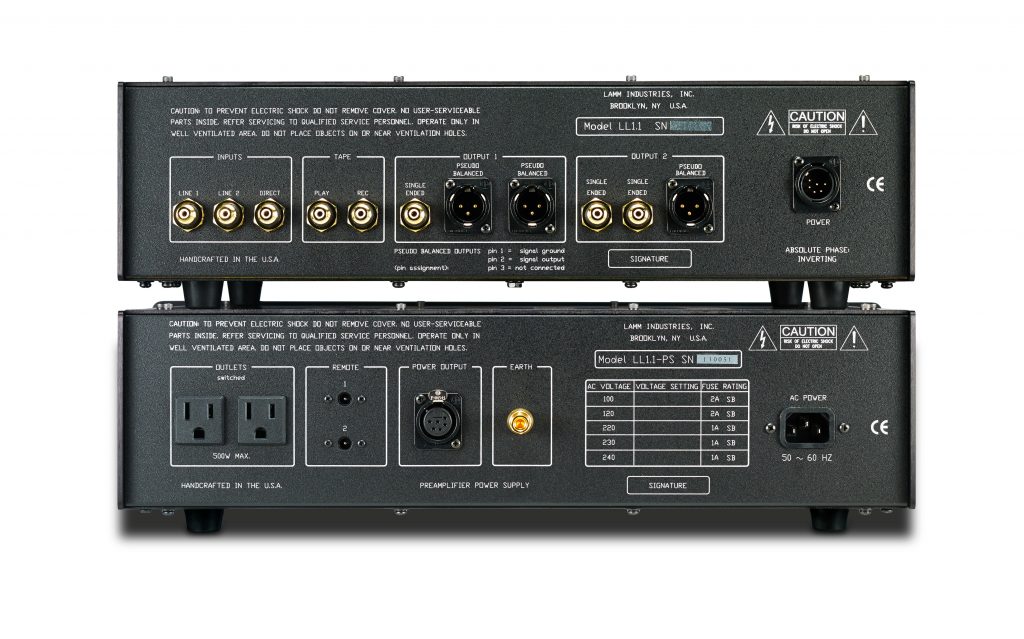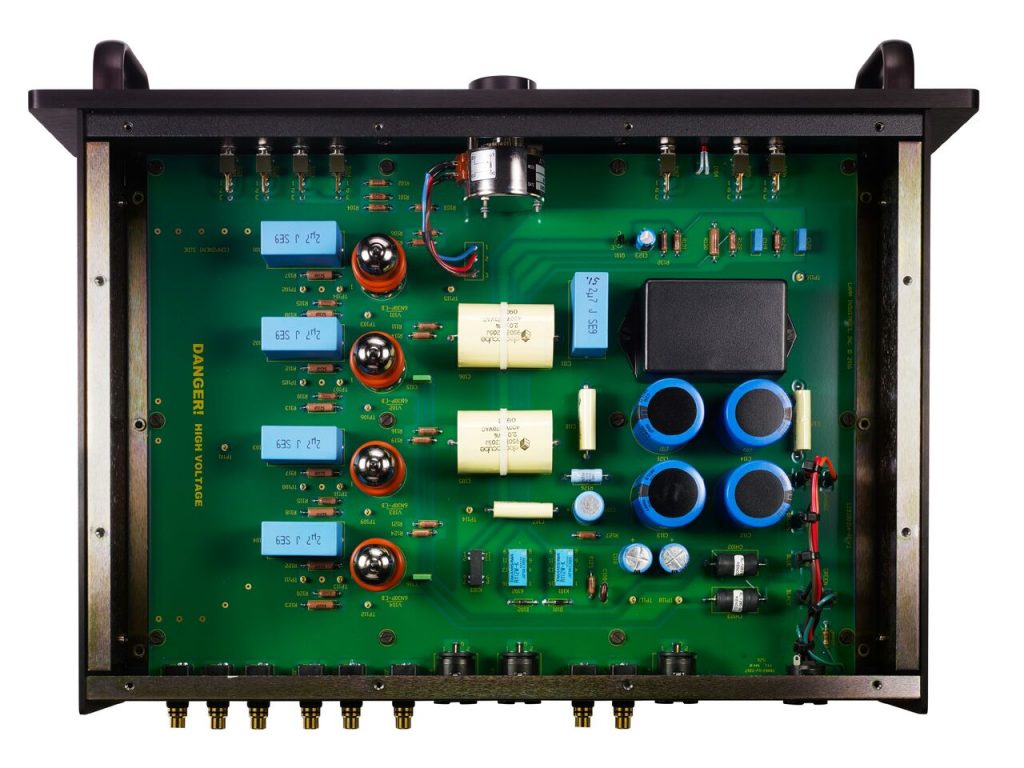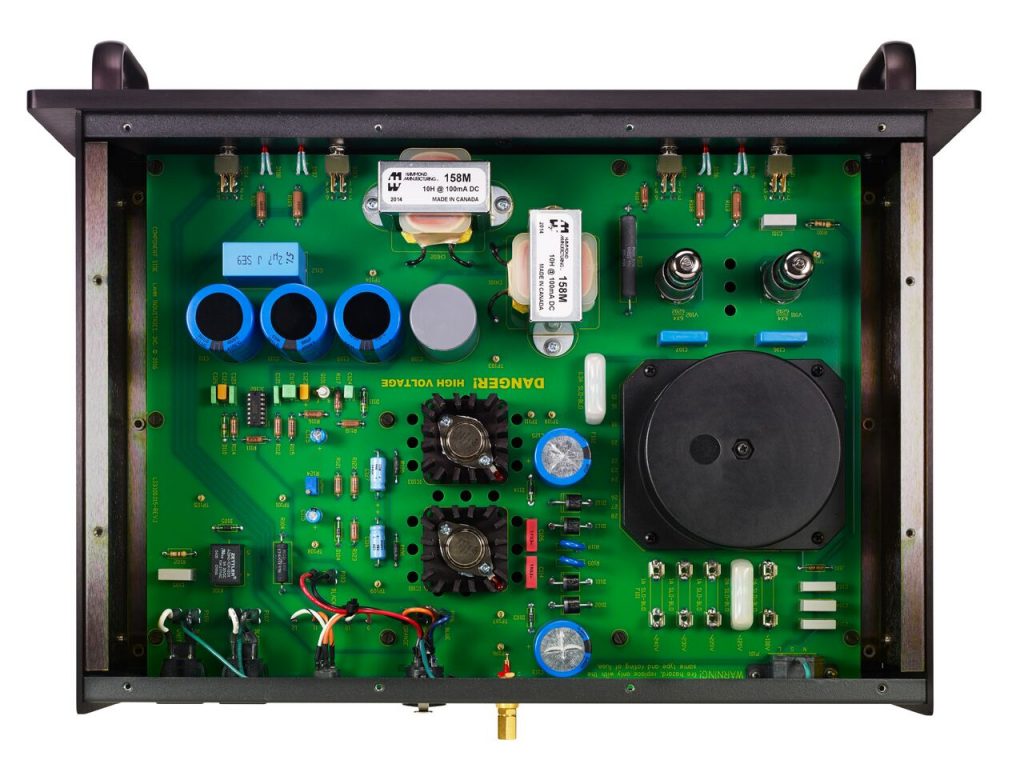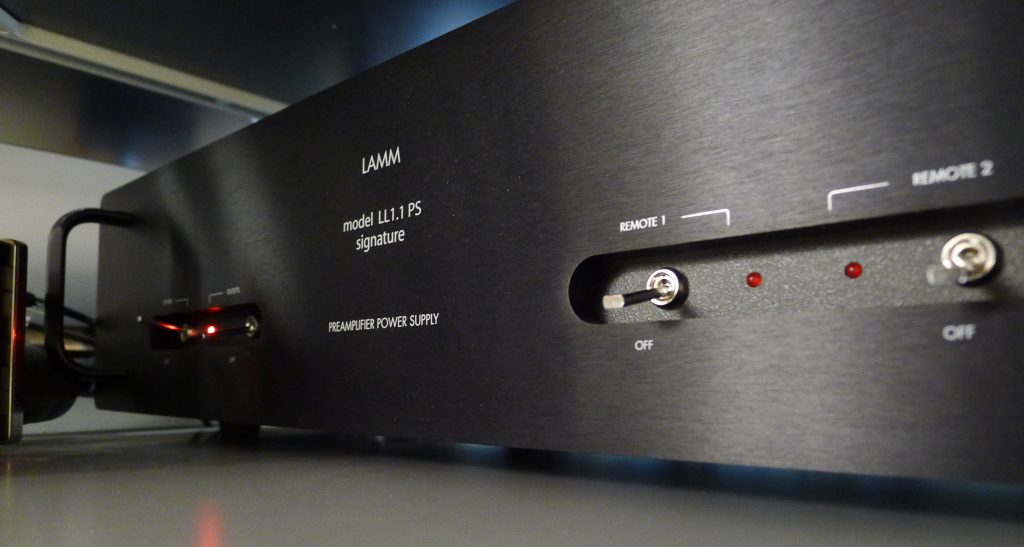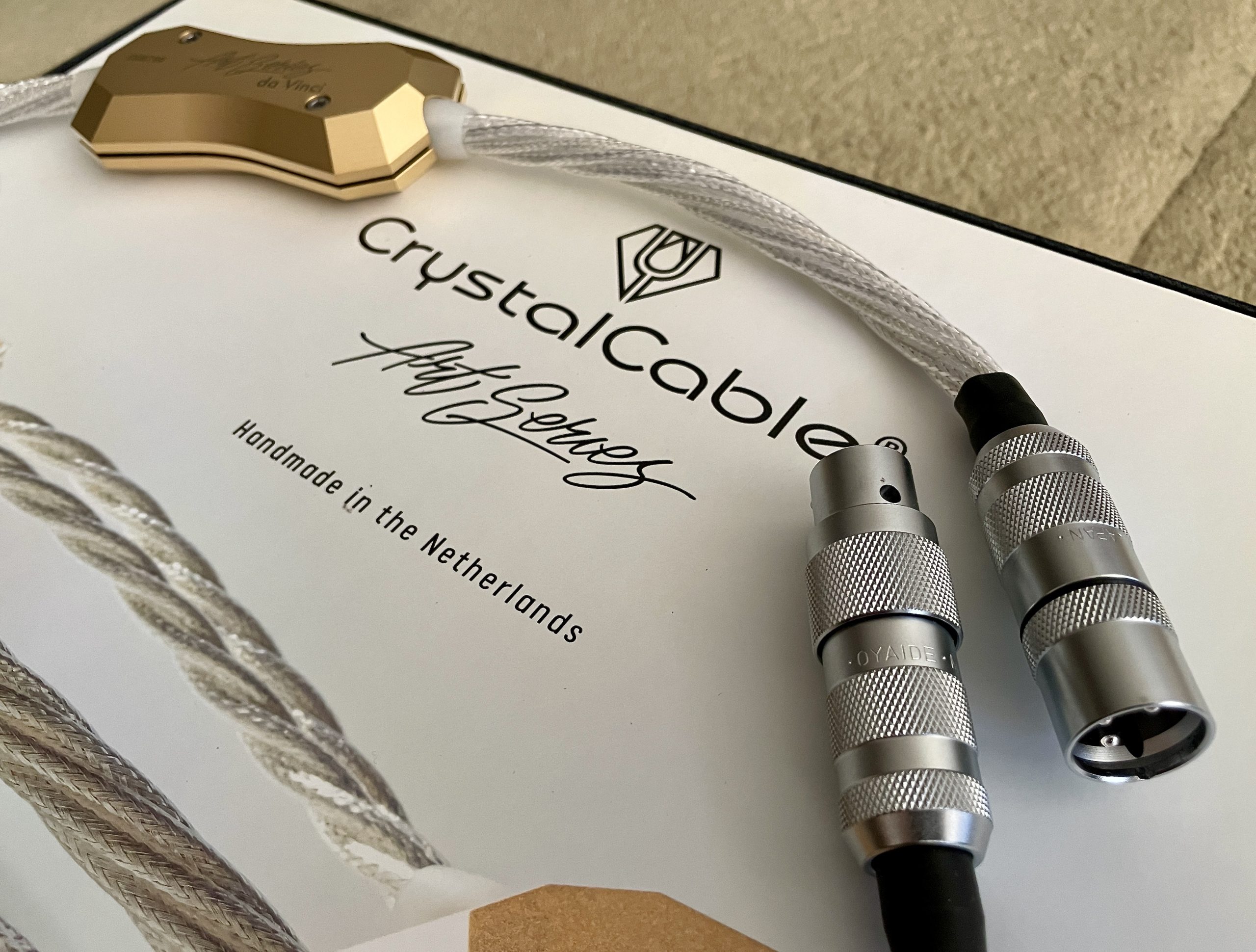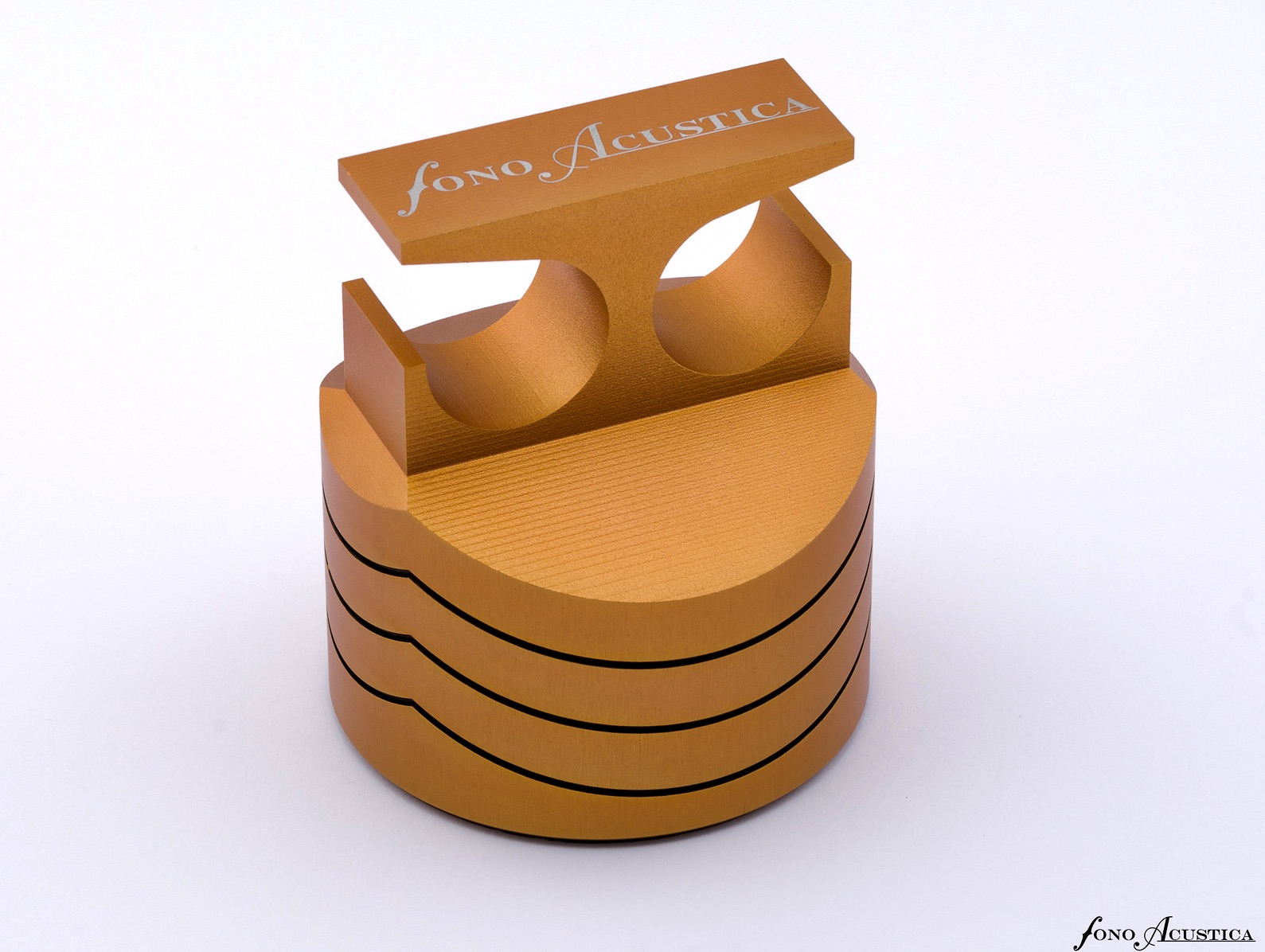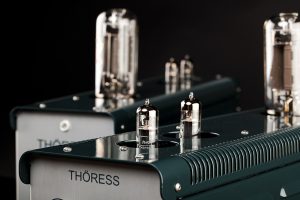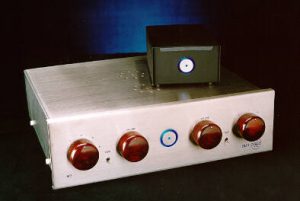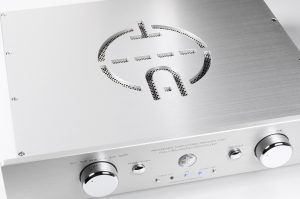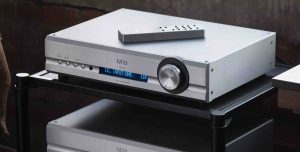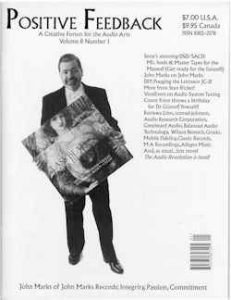I was on the phone with Vladimir Lamm discussing delivery of his LL1.1 Signature Preamp when somehow we got onto the subject of foreign accents.
MN: "I am intrigued by foreign languages. I like sounds. My office is like the United Nations, so I get the chance to be an equal-opportunity abuser."
VL: "That is why we are talking to each other, because you like sounds. And I have zero aptitude for them. My brain is suited for numbers and circuit design."
MN, sotto voce: This is really why we are talking to each other.
the LL1.1 Signature Preamp
Last time around it was the Lamm L2.1 Reference Preamp. Now I was shortly to get the top-of-the-line LL1.1 Signature Preamp and VL promised it would be "like a taste of heaven."
the L2.1 Reference Preamp
MN: "Is there much in common between the L2.1 and the LL1.1?"
VL: "No. There is no similarity to the L2.1 Reference Preamp. Our model LL1.1 Signature is truly a no-compromise design, as close as possible to theoretical perfection, given certain practical limitations."
So, with this preamble, we began.
At the First Session
At my first listening session with the panel I ran down the above dialogue and concluded, "Vladimir Lamm designs on paper. It is his view that the LL1.1 is theoretical perfection, the ultimate. You might say it is the platonic form of preamps."
"I doubt that," Jonathan objected. "Nobody understands Plato these days because nobody reads Greek. He has to be read in the original. Translations do not do him justice."
MN: "Be that as it may, just let me know if you see the pearly gates."
Listening Impressions
Up first was "Alone Together" from Chet, a very early Riverside stereo recording from 1958 (RCD-1135-2, a 20 bit K2 reissue). WOW! What a horn sound! Chet Baker's trumpet is big and deeply saturated, a luscious tone emanating from stage right. Pepper Adams' baritone sax on Chet's left is just as big and saturated. Herbie Mann's flute is to the left of the baritone sax, close by that speaker. Not to neglect Paul Chambers' big, rounded, double bass and the drum kit residing just behind the right speaker.
Notice in the above description the repeated adjective is big. Everything is bigger than it had been, bigger in the same way when you introduce a larger speaker with more drivers and a massive cabinet. Actually, it more closely resembles the introduction of another woofer.
There are gobs of air encapsulating Chet's trumpet and you can hear the notes he gives extra emphasis to slap off the opposite side wall. Location cues are spot on. When Pepper Adams comes in for his second solo I note he's moved over to center. The stage is actually more spacious and none of the instruments are cramped, even though everything is taking up more room. This is because they are described better, particularly in the depiction of depth and modeling.
My buddy Sheldon remarked, "The transient is a tad soft, but not objectionable: I have no problem with that. The sustain is wonderful, as good as it gets. The decay is beautifully done, so smooth."
Indeed, the sustain of the note is packed with inner life, the decay just flows, and the transient is the same as I hear in the other Lamm gear I've reviewed recently. It is not like my solid-state CH Precision L1 Preamp's transient—but, like Sheldon, I have no problem with it.
Texture and timbre are sooo satisfying—sweet, but not overdone—and the LL1.1 imbues every instrument with its own sound and dynamic action. This is not a trivial matter. The Lamm is far ahead of the vast majority of preamps in terms of credibility. The midrange is clear; the treble is extended and so fully integrated as to pass unnoticed (just like with other Lamm gear), only when low frequencies come along there is more of it, a lot more.
a Massive Influx of Low End
After letting the LL1.1 settle in, the first thing I had to deal with was a massive influx of low-end. My YG Anat speakers have an active sub and they were working overtime. It was as if I had installed a second subwoofer. I turned the volume controls down a good 20% to bring the frequencies below 80 Hz in line. The volume may have decreased, but the low-end remained uncommonly energetic. As you'll see, this is a dominant feature and its effects were pervasive.
the LP1 Signature Phono
It harkened back to my time with the Lamm LP1 Signature Phono Preamp which I had on the floor a couple of months ago. The LP1 Sig had a similar low-end—the LL1.1 has even more. Considering this is a fully- tubed device it could have been a real issue if it was uncontrolled and loose.
The Lamm Thrust Power
Fortunately, the LL1.1 has no such problem. Both of these Lamm Signature models are tricked-out with twin external power supplies of such vast capacity as to be considered unrestrained. Theoretically, this would manage the fleshy bottom quite well, and it does. But there's more: It also imparts massive dynamic capability. I described the LP1 Sig macro performance thus:
…the dual power supplies prime the pump to an almost frightening degree. When I play well-recorded vinyl through the LP1 Sig, the fortes burst into the room and achieve peaks beyond other units.
The LL1.1 Sig extended dynamic reach like a fresh booster shot of high octane fuel, especially to the low-end. I'm running out of superlatives. If your bass response is good now, wait 'til you hear this. If your system is at all anemic or dynamically polite, you will find this intoxicating. I guess that description fits, because I loved it!
This kind of bass-on-demand kept me thinking about subwoofers. Like a sub, it affected a host of areas beyond control and macros. A sub makes low-level ambiance cues more explicit and gives the soundstage solidity and a sculptural aspect. Suddenly the recording venue snaps into view.
I described it in the LP1 Sig review like this:
A massive, unshakable foundation was laid down in front of me. The images of the instruments were precisely positioned and with such density and weight, the presentation had the aspect of a large piece of aural sculpture. The effect was immensely impressive in audio terms—and immensely satisfying musically.
This is the bounty of the maxed-out power supplies in Lamm's Signature products.
Rear view of one channel
Fully Mono and Fully Tubed
The LL1.1 Sig is my first-ever component with a fully implemented dual-mono configuration. It is a four-chassis affair and takes dual mono to another level, with separate external power supplies and separate control sections for each channel. Get four shelves ready to accommodate it.
One of my contacts asked me about the noise level. "Tubes are inherently microphonic. That has to get in the way of low-level resolution. Didn't you notice a higher noise level and drop-off in resolution?" That sounds reasonable enough—but it did not happen. I could put my ear inches from the speaker drivers. There was silence. The noise floor was certainly not getting in the way of resolution.
With a spectacular recording like Zubin Mehta and the L.A. Phil performing Also Sprach Zarathustra (Decca SXL 6379 original LP), a finely detailed facsimile of the recording venue was recreated in my room. The famous, prolonged introductory crescendo (used in the film 2001: A Space Odyssey) was very densely scored for low-frequency instruments, including double bass, tympani, organ, bass clarinet, bass trombone, and bass drum.
Good luck unraveling this massive wall of low-end with an ordinary component! I usually skip it and advance to the next section. The LL1.1 Sig not only laid out the interplay among these instruments, it triggered an extreme case of "active eye" syndrome, that peculiar audiophile malady where the spatial cues are so convincing that it activates your visual sense. Your eye starts tracking phantom instruments—even though there aren't any visual cues. There's nothing there to see.
Main chassis interior
Installation and Usage
Situate the four chassis on separate shelves and allow clearance for heat dissipation. Each main chassis connects to its power supply via a detachable umbilical. I would advise that you ensure that both power supplies are connected to the same AC wall outlet. I started with separate AC outlets and there was a loud ground noise.
There is no remote and every switchable function is mirrored in the other control section. Matching the twin stepped volume controls is best done by counting the clicks, so do yourself a favor and site the two control sections side by side within easy reach.
The LL1.1 has three inputs: Line 1, Line 2, and Direct. The Direct Input has the best sound because it bypasses both left and right selector and monitor switches and goes directly to the volume pots. There are two sets of outputs, RCA and XLR, even though the topology is strictly single-ended. As Vladimir himself points out, in some cases he had a reason for not introducing the balanced topology in his preamps, and especially in the tube ones.
Power Supply interior
Please note: The LL1.1 employs a single gain stage, hence it inverts the signal. That means you'll need to swap the plus and minus speaker cables at one set of binding posts.
The Difference
As Vladimir said, there is no similarity between the L2.1 Reference Pre and the LL1.1 Sig. The L2.1 Reference Preamp is a hybrid with two chassis, "A somewhat unusual combination of high voltage vacuum tube power supply and super-linear high voltage MOS-FET" solid-state control section.
The LL1.1 Signature, on the other hand, is vacuum tube in both power supply and control section. It is an upgrade to the LL1 Signature, which was in production since 2010.
The product description remains:
The preamplifier contains four very linear low impedance triodes paralleled into a single inverting gain stage.
The LL1.1 Signature employs a pure single-ended class A operation, with no overall feedback applied. Also featured are specially selected high-transconductance dual triodes 6N30P-EB/ 6Н30П-EB in the signal path and TKD stepped potentiometers for volume control—the best available on today's market.
The preamplifier's audibly neutral power supply features a full-wave vacuum rectifier. This rectifier, together with a choke-containing filter, [removes] hum and buzz and ensures the verity of dynamic range without coloration. Two solid-state analog voltage regulators supply dc voltage to the tube filaments (heaters).
LL1.1 Upgrades
The LL1.1 revision includes the following upgrades and modifications:
- increased immunity to unwanted radio frequency interferences propagated via both radiation and conduction over signal lines & AC power systems
- increased amount of energy storage in the power supply
- certain modifications in protection and time delay circuitries
- improved signal/noise ratio
- replacement of a number of critical components with newly available types of better quality
- Utilization of a technologically new type of pc-boards of superior quality, with gold-plated traces and thru-holes.
Conclusion
For a long time, I wished audio components would go on a high-calorie diet and put some meat on the bones. High resolution audio is often thin and hard-edged. Well, maybe that is changing. For one thing, the audiophile press is talking non-stop about tonal saturation, fullness, and larger scale in a positive way these days.
Lamm components have these things in spades. That is the first thing I noticed, right at the top of this review. It was shocking the way the Lamm LL1.1 Sig Preamp grew my sound. The stage scaled up from a precious, jewel-like miniature to a large piece of audio sculpture. It made me think I had installed a bigger speaker, or added another sub-woofer.
Ever notice how the introduction of a new component coincides with a shift in musical tastes? "My only observation is since you put the Lamm LL1.1 in, you've been playing mostly large-scale music," Lynn commented. Yeah, that's true. Gear lends itself to certain kinds of music and the Lamm Signature components have what it takes to do the big stuff. The LL1.1 Signature Preamp and the LP1 Signature Phono have The Voice of Authority.
The LL1.1 Sig Preamp is the most fully realized of the current crop of Lamm front-end products. A bit more forgiving, warmer, and more saturated than my CH Precision L1 Preamp, yet with equal resolution and more potent low-end, it is a music lover's component, one that will allow you to enjoy a wide variety of recordings.
If this description fits your quest, the LL1.1 may be the ultimate preamp.
Lamm LL1.1 Signature Preamplifier
Retail: $45,590 USD
Specifications
RATED OUTPUT VOLTAGE
- from 20Hz-20KHz into 41-KOhm load: 1 Volt RMS.
VOLTAGE GAIN
- 7.43 ± 2% or 17.43 ± 0.2dB.
ATTENUATION
- 3.98 ± 2% or 12 ± 0.17dB.
ABSOLUTE PHASE
- Inverting
FREQUENCY RESPONSE
- from 1-50 Volts RMS into 41-KOhm load: (-0.1dB) 20 Hz - 20 KHz, (-3dB) 5 Hz -140 KHz.
TOTAL HARMONIC DISTORTION FROM 20 HZ - 20 KHZ
- Vout=1 Volt RMS into 41-KOhm load no more than 0.03%
- Vout=50 Volts RMS into 41-KOhm load no more than 1%
- Vout=1 Volt RMS into instrument load no more than 0.03%
- Vout=50 Volts RMS into instrument load no more than 1%
- Vout=1 Volt RMS into IHF load no more than 0.03%
- Vout=30 Volts RMS into IHF load no more than 1%
IM DISTORTION
60Hz:7KHz (4:1) SMPTE:
- Vout = 1 Volt RMS into 41-KOhm load no more than 0.09%
- Vout = 10 Volts RMS into 41-KOhm load no more than 1%
- Vout = 1 Volt RMS into instrument load no more than 0.09%
- Vout = 10 Volts RMS into instrument load no more than 1%
- Vout = 1 Volt RMS into IHF load no more than 0.09%
- Vout = 10 Volts RMS into IHF load no more than 1%
INPUT SENSITIVITY
- Vout = 1 Volt RMS into 41-KOhm load 0.135 Volts RMS ± 2%
INPUT IMPEDANCE
- F=1KHz Typically 16.5 KOhms.
CORRECTED OUTPUT IMPEDANCE
- F=1KHz typically 200 Ohms
NOISE
- signal-to-noise ratio, typically 88 dB
- below 2 Volts RMS output, unweighted
- signal-to-noise ratio, typically 96 dB
- below 2 Volts RMS output, 22Hz - 22KHz
- signal-to-noise ratio, typically 105 dB
- below 2 Volts RMS output, A-weighted
POWER SUPPLY
- Input voltage range: ±10%
- One power transformer, two vacuum tube rectifiers, four filter chokes, one high voltage (350 vdc) high energy power supply, two solid-state analog non-switching voltage regulators.
- AC voltage intensively filtered by special RFI power line filter.
GENERAL
- Burn-in Time at Factory: Minimum 72 hours.
- Recommended Burn-in End-user's System: Minimum 96 hours.
- Warm-up time: Minimum 25 minutes.
- Unit dimensions
- (preamplifier and power supply have the same dimensions):
- 4.5 inches high x 19 inches wide x 13.875 deep + 1.375 inches of depth for front handles.
- Unit weight: preamplifier: 35.8 Lbs (16.2 Kg), power supply: 21.2 Lbs (9.6 Kg).
- Tube Complement: four 6N30P-EB / 6H30П-EB, first (single) amplification stage.
- Power supply: two 6X4, rectifier tubes.
Lamm Industries, Inc.
2513 East 21 Street
Brooklyn, NY 11235
+1.718.368.0181 tel.
+1.718.368.0140 fax





